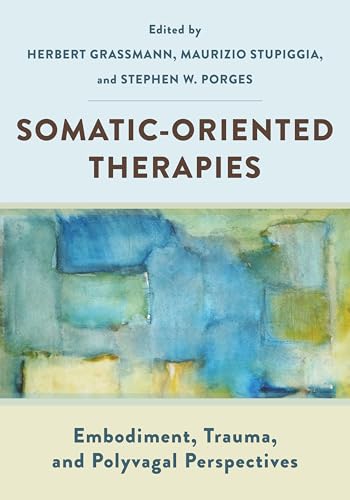Somatic-Oriented Therapies: Embodiment, Trauma, and Polyvagal Perspectives
amazon.com
Somatic-Oriented Therapies: Embodiment, Trauma, and Polyvagal Perspectives

Prematurely evoking clients’ experience of pleasure is contraindicated.
The explicit goal of FACs is to support what is important and meaningful, often in a freewheeling style of disinhibition-fueled oscillation.
shift from a battlefield to a playground and make it possible to turn competition into coregulation.
see another body searching for safety, connection, and belonging. We can hear another human wanting to be heard and needing to be good enough to belong. We can sense and feel another soul on the same journey to be who they really are. Another being, just like us, longing to trust that who they really are is good enough to belong.
Our Adaptive, Reflexive Reactions What if competition didn’t have to feel like a battleground? What if our fear of failure could morph into the thrill of seeing what plays out? What if we could find a way to play when we might otherwise be triggered to attack, defend, or protect? What if we could turn competition into coregulation?
Part of the answer, according to brain researcher Sung Lee (2019), is that much therapy is shaped by a problematic view of organismic functioning: homeostasis.
as a natural, nonefforted trait. Thus, orientation falls under prepared learning (Seligman, 1970, 1971; Dunlap & Stephens, 2014).
We approach our competition as the enemy standing in the way of getting what we want.
The framework is allostasis (Barrett, 2022; Bassett & Gazzaniga, 2011; Koob & Le Moal, 2001; Lee, 2019; Sterling, 2004, 2012, 2014), a theory of organismic self-regulation according to which organisms self-regulate, not by preserving a constant internal milieu (cf. homeostasis), but by adapting their internal milieu in anticipation of future
... See more